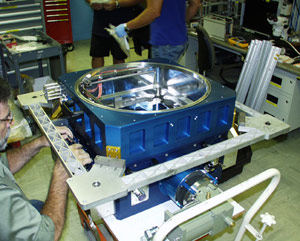 |
|
|
Some Scientific Progress on
Brown Dwarfs
Brown dwarfs are
tricky to study, because even the bigger, brighter ones by definition
don't emit an awful lot of light. But using the 1.4 billion pixel
camera of the Panoramic Survey Telescope & Rapid Response System (Pan-STARRS),
some progress is being made. In a recent report, this quote caught
my eye;
"Spectroscopic follow-up observations on four of them allowed the team to reach several conclusions: These companion brown dwarfs are infrequent, making up only about 0.6% of binaries, at least for those in which the stars are widely spaced (closer pairs were much more difficult to study). More puzzling, the scientists found that the brown dwarf companions are well enough understood to conclude that they did not form at the same time as their more normal, companion star." (1) Well, that presumably means that these brown dwarf companions were captured (or perhaps formed independently from an orbiting or captured partial nebula later on, who knows?) But it's a pretty small sample range at just 4 such objects, so it might be a bit of a stretch to read too much into this at this stage. Also bear in mind that the kind of 'brown dwarf' I'm focussed on with my Dark Star Theory is some way down on the scale of these objects. So way down, in fact, that the Dark Star companion would really be a sub-brown dwarf, a cosmic entity which lies between the smallest brown dwarf and the gas giant Jupiter.
Even so, could this
mean that the Dark Star might have formed or been captured some time
after the formation of the solar system? It most likely first made
its presence felt 3.9 billion years ago during a period of time known as
the 'late, heavy bombardment'. This was some 400 million years
after the formation of the Sun, which more or less insinuates that any
Dark Star out there should really have formed during the same time.
Andy Lloyd, 5th
September 2013
Reference:
1) "Astronomers
Use Pan-STARRS to Detect Brown Dwarf Companion Stars" 3rd September 2013
http://scitechdaily.com/astronomers-use-pan-starrs-detect-brown-dwarf-companion-stars/
with thanks to Mark
|
Random Posts
Powered by Blogger.
Nibiru
NATURAL DISASTERS
EARTH CHANGES
‹
›











No comments